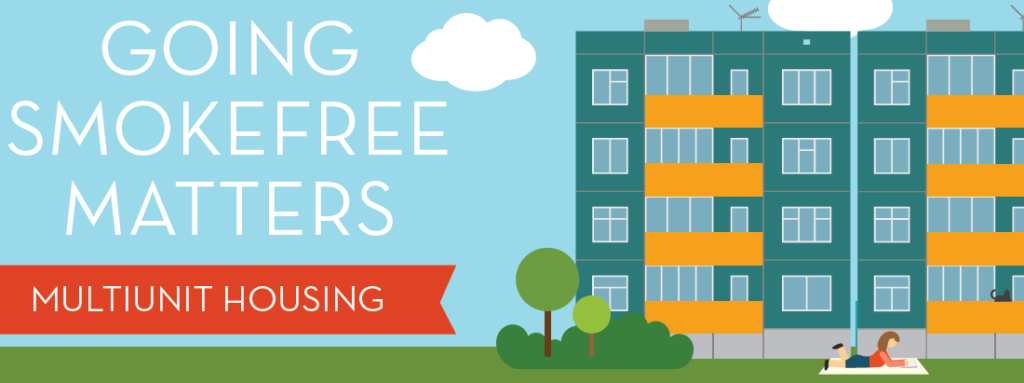
Pride Month: New CDC Feature Article Focuses on Reducing LGBTQ+ Smoking
The Centers for Disease Control and Prevention (CDC) have released a new feature article with information aimed to help bring awareness to and reduce smoking in the LGBTQ+ community. Smoking can cause illness, injury and death and LGBTQ+ people smoke at a higher rate than the general population. This article explains the disparity and offers ways to help make a difference. Read more here.

New Webpage Offers Cessation Support & Messaging Specific to COVID-19
A new webpage is available on Smokefree.gov and focuses on quitting smoking during COVID-19. This resource focuses on overcoming the stress of quitting during the pandemic and offers helpful tips and resources that may be useful in developing messaging for local outreach efforts. Read more here.
Federally Qualified Health Center Use of the Nebraska Tobacco Quitline
Research findings published in Tobacco Prevention & Cessation, show insufficient awareness and perceived effectiveness of the Nebraska Tobacco Quitline in FQHC clinical staff. Non-providers also report a limited role in cessation efforts beyond assessment of use and the lack of supportive processes for intervention. Read more here.
Youth and Young Adult Use of Pod-Based E-Cigs from 2015-2019
According to research published in JAMA Pediatrics, pod-based e-cigarettes represent a substantial evolution in design by increasing the efficient delivery of nicotine. In this and past research, there is evidence that the higher levels contribute to higher nicotine dependence associated with their use. Read more here.

Resources: CDC Smokefree Multi-Unit Housing Resources Available
CDC has a webpage and infographic specifically designed for those seeking messaging on the dangers of secondhand smoke in multi-unit housing. Read more here.
FDA Warns Manufacturers and Retailers to Remove Certain Products from Market
The Food and Drug Administration (FDA) has issued warning letters to retailers and manufacturers who sell, manufacture and/or import unauthorized electronic nicotine delivery system products targeted to youth. Read more here.

Social Media Toolkit for Reaching Specific Populations in Tobacco Control
A new social media toolkit was developed by George Washington University Cancer Center and the eight national networks funded by the CDC. The toolkit is designed to help stakeholders implement evidence-based practices when communicating about emerging issues in commercial tobacco prevention with priority populations. The toolkit includes suggested health observances, sample posts that can be adapted for use and images for download. Read more here.
Passive Exposure to Pollutants from a New Generation of Cigarettes
The results of a study published in the International Journal of Environmental Research and Public Health show that although the levels of pollutants emitted by e-cigarettes and heat-not-burn tobacco are substantially lower compared to those from traditional cigarettes, the devices are still a source of indoor air pollutants. Read more here.

New Infographics on Impact of Second- and Thirdhand Smoke in Children
The AAP Julius B. Richmond Center of Excellence has released two new infographics that provide key information about the impact of second and thirdhand smoke on children. Access the secondhand infographic and the thirdhand infographic here.
Profiles of Commercial Cigarette-Use Among Indigenous North Americans
The journal, Nicotine & Tobacco Research, has published research findings that suggest there are multiple periods of critical smoking risk among American Indian youth and young adults, as well as a general profile of diverse smoking history. This information can be used to help inform targeted intervention and treatment programming. Read more here.

Smoke-Free Tribal Housing Resource
The Public Health Law Center has released a guide for Tribal Communities working on policies to restrict the smoking of commercial tobacco products in Tribal housing. Read more here.
New Resource: Impact of Commercial Tobacco in Indian Country Fact Sheet
The National Indian Health Board (NIHB) has created a fact sheet detailing the impact of commercial tobacco on Indian country. The NIHB does work to support the Tribes working to increase tobacco cessation. Read more here.
The Role of Healthcare Providers in Helping Those with Mental Illness Quit
The Journal of Behavioral Health Services & Research published a study focused on the role a healthcare provider plays in helping those with a serious mental illness quit tobacco. The study found that strategies to increase low-income smokers’ contact with providers may help reduce treatment utilization barriers among these smokers. Read more here.
Assad M. & Leah M.: “We Are a Team.”
Assad & Leah’s Tips from Former Smokers® Video
Leah M. is one of the newest former smokers to share her story for the Tips® campaign. When Leah was diagnosed with colorectal cancer from smoking, her 19-year-old son, Asaad, put his life on hold to take care of her. They became a team in the fight for Leah’s life. Find more Tips® videos here.

Free NRT Available Through Quitline
The Nebraska Tobacco Quitline offers free, confidential support for those interested in quitting tobacco while allowing callers to maintain safe social distancing. Cessation support is available 24/7 by phone and free nicotine replacement therapy is mailed directly to the caller’s home. Fliers are available here:
Association Between Secondhand Smoke Exposure & Hypertension Still High
A review of data published in the Journal of Hypertension focuses on the current evidence regarding the association between secondhand smoke exposure and hypertension as well as exploration of the links between secondhand smoke exposure and hypertensive organ damage. Read more here.
